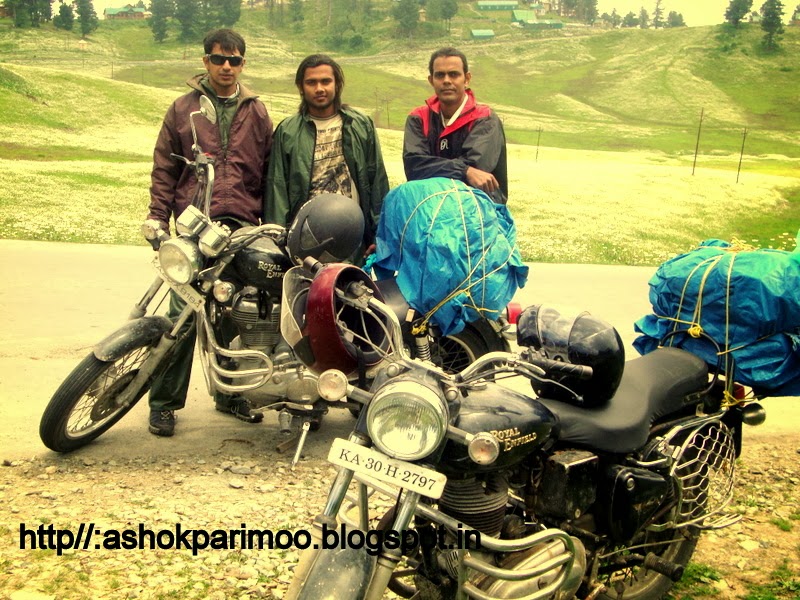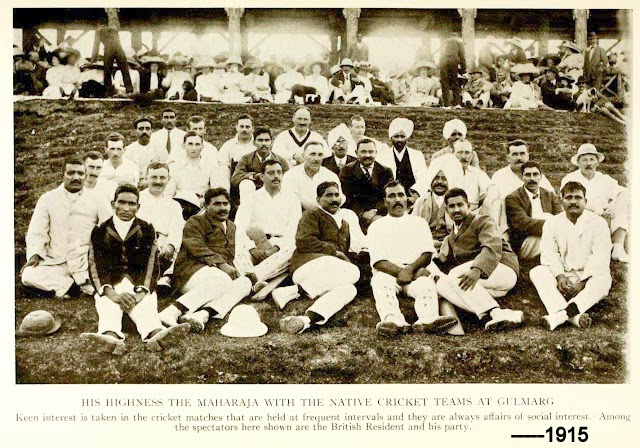Chapter--(9
& 10 of (15)
In this chapter, I am
combining two chapters into one, otherwise this chapter would be a small
narration, because of the reason that I have explained below.
Since today we had planned
to go to “AMAN SETU (The PEACE BRIDGE)” at Uri. And the duration of
this trip was planned for three days.But because of the indefinite
Bandh call forced by the separatists, we couldn't move
around as planned. We feel terribly sorry that
we couldn't make it to “Aman Setu” the conclusion is that the “WAR
BEGETS TOURISM”.
“Aman Setu”, the
Friendship Bridge at Salamabad in “URI” that links Jammu & Kashmir and
Pakistan-Occupied-Kashmir, has become a hot tourist attraction. Tourists come
here to see the “PEACE BRIDGE” that provides a “Peace-link with the enemy”. The
PEACE BRIDGE that is suppose to links the HEARTS and brought together families
and trades separated by WARS.
After
a gap of 57 years, Aman Setu bridge that connected Srinagar-Muzaffarabad road
was thrown open on April 7, 2005, to facilitate meeting of divided families,
was built with the hope as the “MOTHER OF ALL
CONFIDENCE BUILDING MEASURES” aimed at restoring peace
and tranquillity in the state. The first bus
was flagged off by Priminster Manmohan Singh, despite strong
and furious opposition from militant organizations. Where as In 2008,
the bilateral trade services was started from this bridge.
But in the bargain, Aman Setu turned out to be just another
wet-squid. Didn't fulfil the expectations of the
Kashmiri aspirants. Because of any hostilities anywhere along
LOC, the first casualty is bus services that
frequently get suspended for indefinitely. Traders and the
commuters are unhappy and wary, because Indian
Kashmiri truck drivers are taken as hostage for any custom violation
done by Pakistani traders and truck drivers. In the Nut-Shell
Aman-Setu remains a limping and disappointing confidence building
measure?
What
I am writing now, is a statement of an Indian Army officer that AMAN SETU, is
not a leisure tourist spot,but is just like any other ordinary
bridge at LOC. We can not afford a casual attitude. This is not “WAGAH”,
which is the International border dividing two nations and both the Armies hold
together the regular Flag-Hosting ceremonies. We do not want to give the LOC
the stamp of Legitimacy. India does not end here, it extends beyond the LOC and
LOC is not permanent.
Srinagar-Muzzafarabad
route was a part of old silk route and the Mughal route as well, and all along
the route there are still many ancient sites, temples, Gurudwaras and shrines
of religious and historical interests.
After
nearly four days of Paralysing and holding the Kashmir valley hostage by
the Separatists Bandh call. Today as the valley is back to normal, we
decided to go to Gulmarg Via Naebal--Manigam--Kunzar--Tangmarg--Gulmarg to
Bootapathri.
From
Zeestha devi temple complex, we rode our bikes via, Dal Gate, Residency road,
Lal Chowk, Hari Singh street, Kashmir Sectratre, Batmalu, Nokersar, Naebal, Manigam,
Kunzar and halted for a short time at Tangmarg.
As per prior communication, Bushan Parimoo had intimated one of his good friend Mr. Mahmood Shokhut, chief executive officer, Gulmarg Tourism, who was in-charge of Tangmarg/ Gulmarg tourism department. Since Mr. Mahmood Shokut is a very good trekker and is very well versed with the whole area, he gave us few valuable tips of important places around Gulmarg to visit. He even helped us to arrange a hut for over night stay.
This
picture bellow is of a village called as "HOKERSAR" which is just
about 8 to 10 Km from Batmalu village of the Srinagar city, In 1947, a
small contingent of Pakistan army had reached up
to "HOKERSAR". Even just by one day, had Indian army
delayed Indian Air Force bombardment on Pakistani army at Baramula,
Pakistan army would have captured whole of Srinagar city.
As per prior communication, Bushan Parimoo had intimated one of his good friend Mr. Mahmood Shokhut, chief executive officer, Gulmarg Tourism, who was in-charge of Tangmarg/ Gulmarg tourism department. Since Mr. Mahmood Shokut is a very good trekker and is very well versed with the whole area, he gave us few valuable tips of important places around Gulmarg to visit. He even helped us to arrange a hut for over night stay.
At
Tangmarg we visited a village called as “Darakesi” where once upon a time the
brave Gullar “Gullar Din Mohamad” Lived. This brave Gujjar was awarded “Padama
Shree” by the government of India for his gallantry deed of informing
Indian Army in 1965, about the infiltration of Pakistan
Army personal sneaking into
Indian territory disguising as Mujahideens. In the later spat of terrorism in
1990, he was shot dead by the militants to take the revenge of 1965
as an Indian Army informer.
Another
Gujjar lady who was conferred with bravery gallantry award of “Padam
Shree” in 1972, is Mrs. Mali from Pooch/ Jorian. She is the only woman
from J&K who has been conferred with this highest honourable and
prestigious gallantry award. In 1971 war she was fearlessly
daring woman who helped Indian Army with very vital informations about the
Pankistani army strategic movements.
Then
from Tangmarg we rode towards Gulmarg which is about 10 Km distance. Road from
Tangmarg to Gulmarg is full of lush green scenic panorama of thick
healthy pine trees, colourful wild flowers and zig-zag good road. It’s a
blissful pleasure to drive the motor bikes on this cool breeze scenic
road. It feels great when while ridding motor bikes, the cold wind hits us
directly on our faces and bodies. It’s an amazing experience by itself.
Gulmarg
has been a resort for the kings like Yousuf Shah Chak and who used to
visit frequently. The old name of Gulmarg was "Gaurimarg", the name
of Lord Shiva's wife. Yousuf Shah Chak changed its name to Gulmarg, meaning the
place of roses. During the early part of the 20th century the famous Central
Asian explorer Sir Mac Aurel Stein (1862–1943), made his home here in
a tent between his expeditions. It was a favourite summer holiday destination
for the British stationed in India.
The surrounding areas were politically restive during a period of relative peace and quiet. The town is nestled within the imposing Himalayian peaks, and lies within miles of the Line of Control. It receives heavy snowfall during the winter season and is a popular skiers sort.
With
the abatement of militancy in the area, Gulmarg has quickly become one of the
state's most visited destinations. The slopes of Afarwat Hills of the Pir
Panjal Range of the Himalaya Chain boast one of the longest and
highest ski slopes in Asia. The total distance covered by ski lifts is five
kilometres and the resort peaks at an altitude of 3,950 m
(12,959 ft), accessed by an aerial gondola (telecabine). The entire hill
is guarded by the army at all times. The army, which is seen everywhere in the
cities of Kashmir, is not in the town or the actual hilltop. Frisking is only
done midway on the access road at 3 places: Tangmarg, near an army camp on
the road from Tangmarg, and 5 km before entering Gulmarg. Gulmarg does not
have any permanent residents. All living in Gulmarg are hotel employees and
guests.
Gulmarg
is only one of the tourist spot, which is thronged by the tourist throughout
the year, specially tourist in big number come here to ski during the peak
winter also.
Gulmarg
has one of the words highest natural Golf Grounds. Now a days the touriusium
department has installed electric Cable cars, named as
“Gondolas” which are 4 Km long and goes upto the hight of 12,000 feet
high. From our group only Abhimanyu and Krishna availed the Gondola facility.
There
at Gulmarg town itself, there is a small Shiva temple one of the small mountain
peak, where lot of Hindi movies scenes are shot. Tourists have to climb about
100 steps to reach the temple.
The latest marketing strategy of
whole Kashmiri valley hoteliers and the road side restaurants is that
they name these restaurants as Hindu Names, such as Mahajn
Dhabha, Laxmi tea stall, Gayteri fast food joint, Shakati caterers etc,
etc. But in fact these are owned and run by Kashmiri Muslims. But when
Indian tourists read these Hindu names and then they enter
to have food. Now it is left to you guys to draw the conclusion?
We
spent the night at a tourist hut where the dinner too was served to us. Next
day morning after the breakfast we drove to visit “Botpatrhri”, which is
a small hamlet bordering LOC. After few Km distance from
“Botpatrhri” is POK. To visit “Botpatrhri” we had to take army’s permission at
Gulmarg itself. On three side of “Botpatrhri” is surrounded by POK adjoining on
Pooch, Uri and Titwal sector.
We spent the whole day enjoying all the beautiful and serine surrounding areas around Gulmarg and “Botpatrhri”. We interacted with lot of areas Gujjar-Bakarwal villagers and their families. Next day morning after the breakfast we rode our bikes towards Anathnag.
Next chapter to be continued------------





























+IN+PAST.jpg)














